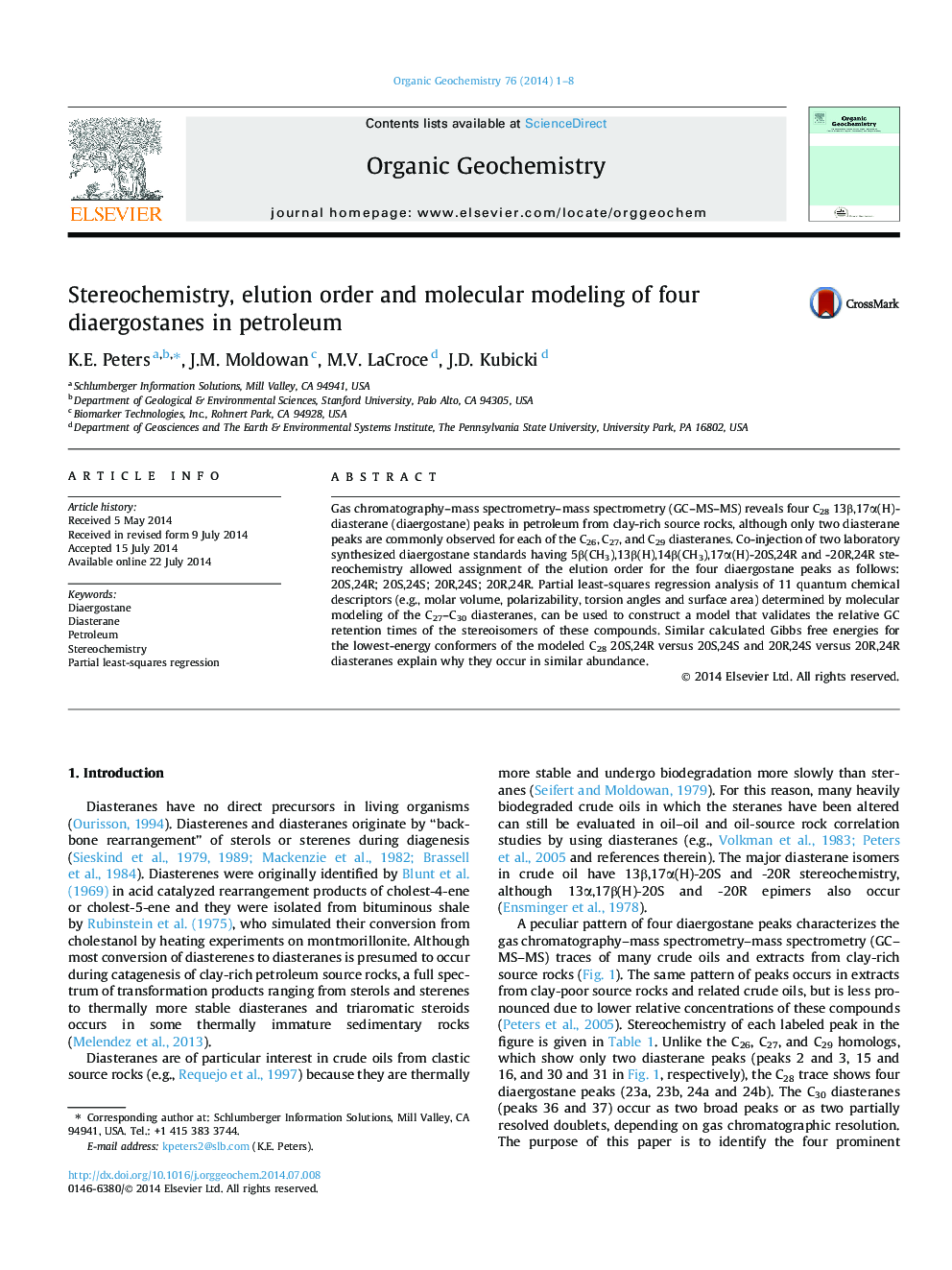| Article ID | Journal | Published Year | Pages | File Type |
|---|---|---|---|---|
| 5162235 | Organic Geochemistry | 2014 | 8 Pages |
Abstract
Gas chromatography-mass spectrometry-mass spectrometry (GC-MS-MS) reveals four C28 13β,17α(H)-diasterane (diaergostane) peaks in petroleum from clay-rich source rocks, although only two diasterane peaks are commonly observed for each of the C26, C27, and C29 diasteranes. Co-injection of two laboratory synthesized diaergostane standards having 5β(CH3),13β(H),14β(CH3),17α(H)-20S,24R and -20R,24R stereochemistry allowed assignment of the elution order for the four diaergostane peaks as follows: 20S,24R; 20S,24S; 20R,24S; 20R,24R. Partial least-squares regression analysis of 11 quantum chemical descriptors (e.g., molar volume, polarizability, torsion angles and surface area) determined by molecular modeling of the C27-C30 diasteranes, can be used to construct a model that validates the relative GC retention times of the stereoisomers of these compounds. Similar calculated Gibbs free energies for the lowest-energy conformers of the modeled C28 20S,24R versus 20S,24S and 20R,24S versus 20R,24R diasteranes explain why they occur in similar abundance.
Related Topics
Physical Sciences and Engineering
Chemistry
Organic Chemistry
Authors
K.E. Peters, J.M. Moldowan, M.V. LaCroce, J.D. Kubicki,
